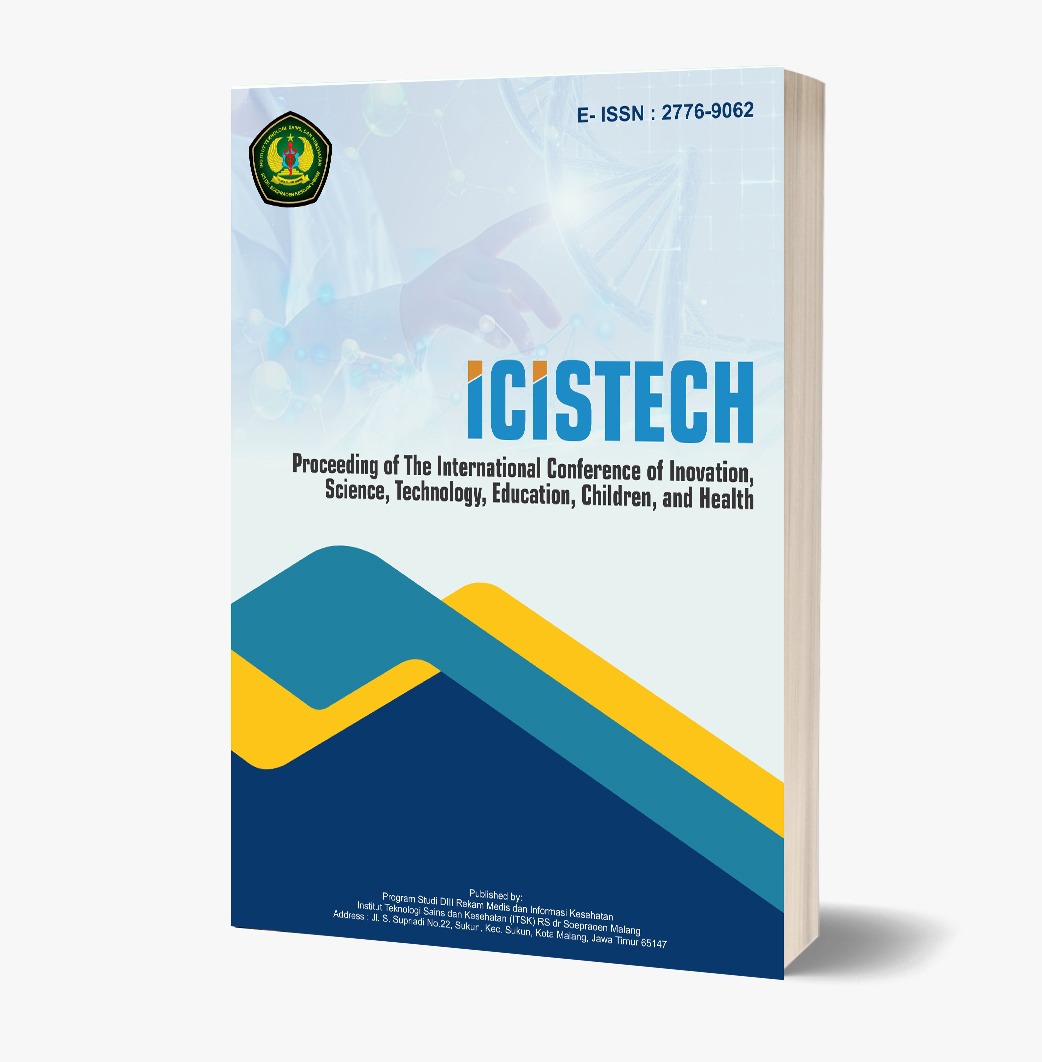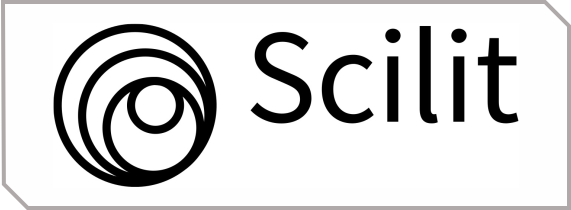Relationship Between Pregnant Women's Knowledge of Danger Signs and Compliance with Antenatal Care at Ternate City Health Center
DOI:
https://doi.org/10.62951/icistech.v5i1.250Keywords:
ANC, Danger Signs, KnowledgeAbstract
Pregnancy is a critical period that begins with conception and lasts until the birth of the fetus, typically lasting about 280 days. Adequate antenatal care (ANC) is essential to ensure the healthy development of the fetus and to identify potential complications early. One of the most important factors contributing to maternal and fetal health is the level of knowledge pregnant women have regarding pregnancy-related danger signs. This study aims to analyze the relationship between pregnant women’s knowledge of pregnancy danger signs and their compliance with attending ANC visits at the Ternate City Health Center. This research employed a qualitative design with a cross-sectional approach to examine the knowledge and compliance of pregnant women within the area. A total sampling technique was used, where the sample size was equivalent to the population size. Data were analyzed using the Chi-square test to determine any significant relationships between the variables. The results of the analysis showed a significant relationship between the pregnant women’s knowledge of pregnancy danger signs and their adherence to ANC visits. The statistical analysis indicated a p-value of 0.003 (p < 0.05), demonstrating a strong correlation between the two factors. This finding highlights the importance of educating pregnant women about the danger signs of pregnancy, as better awareness may lead to higher rates of ANC attendance. Furthermore, the study emphasizes the role of healthcare providers in disseminating critical information to expectant mothers, ensuring they recognize the importance of timely ANC visits. In conclusion, increasing knowledge about pregnancy-related danger signs among pregnant women is crucial for improving maternal health outcomes and promoting better compliance with ANC visits, ultimately leading to healthier pregnancies.
References
Almini, A., & Harahap, A. P. (2019). The relationship between the knowledge level of third trimester pregnant women regarding pregnancy danger signs and ANC visit compliance in the Karang Pule Public Health Center working area. Midwifery Journal: Journal Kebidanan UM. Mataram, 2(2), 21. https://doi.org/10.31764/mj.v2i2.802
Ananda, F. P., Syafridal, M., Surdam, Z., Dewi, A. S., Arfah, A. I., Susiawaty, & Irwan. (2022). The relationship between pregnant women's knowledge of pregnancy danger signs and ANC compliance at RSIA Ananda Makassar 2019. Fakumi Medical Journal: Jurnal Mahasiswa Kedokteran, 2(5), 172-177. https://doi.org/10.33096/fmj.v2i3.35
Anggraini, D., Taviyanda, D., & Wahyuningsih, A. (2022). Description of pregnant women's knowledge regarding pregnancy danger signs: Literature review. Jurnal Penelitian Keperawatan, 8(1), 9-16. https://doi.org/10.32660/jpk.v8i1.591
Anisa, A., Munir, R., & Lestari, F. (2022). The relationship between pregnant women's knowledge of pregnancy danger signs and the utilization of the maternal and child health book (KIA). Journal of Midwifery Care, 2(2), 95-105. https://doi.org/10.34305/jmc.v2i2.421
Aprilia, K., & Ramadhan, K. (2020). Increasing pregnant women's knowledge about pregnancy danger signs through counseling. Jurnal Pengabdian Bidan Nasuha, 1(1), 7-11. https://doi.org/10.33860/jpbn.v1i1.302
Bahriah, Y., Bastiani, A., Rahmawati, F., Wulandari, N., & Khotimah, N. H. (2022). The relationship between pregnant women's class and pregnant women's knowledge of pregnancy danger signs. Community Development Journal: Jurnal Pengabdian Masyarakat, 3(3), 2015-2019. https://doi.org/10.31004/cdj.v3i3.9811
Dewie, A. (2021). Knowledge and attitudes towards pregnancy danger signs related to the utilization of the KIA book. JAMBI MEDICAL JOURNAL "Jurnal Kedokteran Dan Kesehatan, 9(1), 138-146. https://doi.org/10.22437/jmj.v9i1.12841
Dianti, D. N. (2021). Mother's knowledge of pregnancy danger signs with the Sahabat Ibu Hamil (ASIh) application media. Jurnal Kebidanan Malahayati, 7(1), 99-103. https://doi.org/10.33024/jkm.v7i1.3124
Harahap, D. A., Zaliniah, Z., & Sartika, Y. (2023). Maternal behavior during pregnancy in efforts to prevent stunting in children born in Kampar Regency. Jurnal Kesehatan Komunitas, 9(1), 149-156. https://doi.org/10.25311/keskom.Vol9.Iss1.1450
Kolantunga, P. M., Mayulu, N., & Kundre, R. (2021). The relationship between the knowledge level of pregnant women regarding pregnancy danger signs and compliance in performing antenatal care (ANC): Systematic review. Jurnal Keperawatan, 9(2), 40. https://doi.org/10.35790/jkp.v9i2.36780
Nasrudin, N., Prisusanti, R. D., Syofya, H., Maidelwita, Y., & Yuliati, L. (2024). Education to improve the healthy life of rural communities in accelerating the reduction of stunting. Journal of Human and Education (JAHE), 4(1), 63-69. https://doi.org/10.31004/jh.v4i1.546
Oktavia, L. D. (2019). Description of pregnant women's knowledge about pregnancy danger signs in the Polindes Tanjung Gunung working area 2018. Jurnal Kesehatan Poltekkes Kemenkes Ri Pangkalpinang, 6(2), 63. https://doi.org/10.32922/jkp.v6i2.62
Prisusanti, R. D. (2021). Metodologi penelitian di berbagai bidang.
Raninuny, Y. R., Said, F. I., & Joni, Y. N. (2024). Description of pregnant women's knowledge about pregnancy danger signs and health in Jayapura City showing health from the district health office.
Rista Andaruni, N. Q., Pamungkas, C. E., & Lestari, C. I. (2019). Description of the knowledge level of first trimester pregnant women regarding pregnancy danger signs at the Karang Pule Public Health Center. Midwifery Journal: Jurnal Kebidanan UM. Mataram, 2(2), 30. https://doi.org/10.31764/mj.v2i2.805
Stephen, G., Mgongo, M., Hussein, H. T., et al. (2018). Anemia in pregnancy: Prevalence, risk factors, and adverse perinatal outcomes in Northern Tanzania. Journal Hindawi Anemia. https://doi.org/10.1155/2018/1846280
Wulansari, I. (2022). Description of pregnant women's knowledge about pregnancy danger signs in the Kabilah Bone Public Health Center working area. Jambura Nursing Journal, 4(1), 44-56. https://doi.org/10.37311/jnj.v4i1.13478
Downloads
Published
How to Cite
Issue
Section
License
Copyright (c) 2025 Proceeding of The International Conference of Inovation, Science, Technology, Education, Children, and Health

This work is licensed under a Creative Commons Attribution-ShareAlike 4.0 International License.













